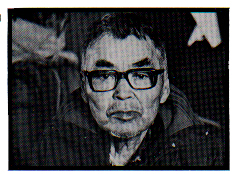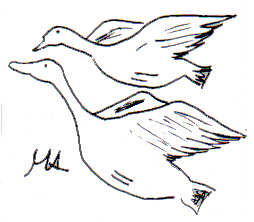 This collection of student work is from Frank Keim's classes. He wants to share these works for others to use as an example of culturally-based curriculum and documentation. These documents have been OCR-scanned and are available for educational use only.
This collection of student work is from Frank Keim's classes. He wants to share these works for others to use as an example of culturally-based curriculum and documentation. These documents have been OCR-scanned and are available for educational use only.Special | A | B | C | D | E | F | G | H | I | J | K | L | M | N | O
P | Q | R | S | T | U | V | W | X | Y | Z | ALL
Pete Kopanuk:
(Iteqacanaq) "I was born in Hooper Bay on November 13, 1906, down at the old sealing camp where the land has been eroded away by the sea. My dad was from Qissunaq and my mom was from Hooper Bay. There used to be many people down there at the sealing camp in those days. They used only skin kayaks for hunting because they had no boats and kickers. At that time people were very healthy and strong; women too, because they used to eat a lot of wild foods, and when they cooked the meat, they cooked it half-cooked. And when the fishing season came they made their nets out of seal, whale and other animal sinew. A lot of people were always short on food in the months of January, February, March and April. But even though they had hard times in those months, the men went out hunting seals and mukluks until April when there were not as many stormy days and hunting was better. In those days they didn't know about game wardens and they used to hunt ducks and geese by kayak. During the time when geese couldn't fly, their kayaks were full when they returned home. We did the same thing from year to year. They used to use harpoons to hunt birds and geese. They didn't have any shotguns in those days. Nowadays there are fewer geese and ducks, especially Emperor geese. We think the Fish and Wildlife are to blame because those people handled the ducklings to put rings on their legs. When these are handled by humans the mother duck or goose will not take care of its ducklings anymore. But they blamed the Eskimos for that. In past times these people around here tried to make a living by their own strength, and it was real hard. There were no stores then; only some strangers came by dogteam, and they brought things like black bull tobacco and tea and khaki and white cloth, no calico or gingham."
interview by Chuck Rivers | ||
|





